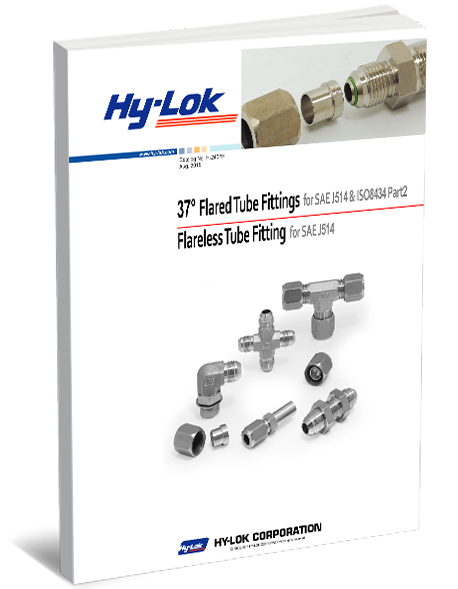Hy-Lok Canada’s standard inventory of metals includes 316 stainless steel, carbon steel and brass. Many of our competitors struggle to source large quantities of brass and maintain a steady supply. Since Hy-Lok is a worldwide manufacturer and distributor, we have maintained a steady supply of brass and other metals.
Keep reading to learn more about our tube fittings catalogue’s most commonly available metals!
The Stainless Steel Family
Not all steel is alike! In fact, stainless steel is categorized into five types: austenitic, ferritic, martensitic, duplex (austenitic/ferritic) and precipitation. Those five types are subdivided into steel grades and then further broken down into different levels of quality, durability and temperature resistance.
For tubing and valves, austenitic is ideal because it has excellent corrosion resistance, is non-magnetic, and is suitable for both high and low-temperature applications. Another essential characteristic of austenitic steel is that it cannot be hardened by heat treatment but is hardenable by cold working.
316 Stainless Steel
316 stainless steel is part of the austenitic group, which has high durability and ductility, especially in Cryogenic applications. Because of the improved corrosion resistance, 316 stainless steel is a marine-grade metal suitable for coastal environments, like an off-shore oil rig. 316 stainless steel works best in industrial environments with potent chemicals and acids, like pharmaceutical and medical manufacturing facilities.
Carbon Steel
Carbon steel is the most common metal type found in pipes because the low amounts of alloying materials make it a cost-effective material for fabricating pipes. With a minimal amount of alloying materials, mostly a high level of carbon, Hy-Lok can fine-tune the properties of carbon steel to best fit a client’s needs.
316 Stainless Steel vs. Carbon Steel
The main difference between carbon steel and 316 stainless steel is the amount of chromium and carbon present. To be categorized as stainless steel, the metal must have a minimum of 10.5 percent chromium and no more than a mass of 1.2 percent carbon. In contrast, carbon steel has less than 10.5 percent chromium and a higher carbon content. The more carbon is present, the stronger the material will be.
Brass
Brass is an incredibly durable metal with a high machinability rate and low lead content. It is the ideal metal for cold-working and is most commonly produced as pipes and used in refrigeration settings. The most common brass alloy used is alloy 330 because of its moderate strength, corrosion resistance and electrical conductivity.
Copper, with a main alloy element of zinc, produces brass. Visually, brass is a beautiful metal with a golden-orange colour, easily polished to a high shine. Brass fittings are ideal for HVAC industries that often work with cold temperatures and refrigerants.
Hy-Lok’s Customizability
Hy-Lok can source different alloys and materials per client needs in specific applications. For example, in applications with corrosive materials or extremely high temperatures, we typically add monel alloys because of the exceptional corrosion and temperature resistance they provide to the steel.
Quality You Can Trust
Hy-Lok fittings and components are rigorously batch-tested to ensure quality. We have an extensive selection of sizes and specifications available, and our products are 100% interchangeable with other trusted brands like Swagelok.
Contact our team for more information if you have questions regarding our tube fittings catalogue.




